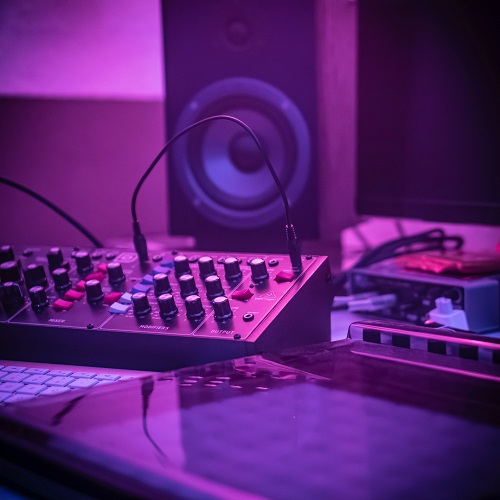The synthesizer was a game-changer in the music industry, inspiring a generation of musicians who had never touched a keyboard before. The synthesizer revolutionized the landscape of popular music and continues to influence musicians today. Fans in the late 1970s and early 1980s were relieved to discover an entirely new path to excellence in music after becoming tired with guitars and rock traditions, becoming frustrated with the need to learn and play, and becoming fearful of the expense and inflexibility of cumbersome band gear.
The post-punk ethos of "anyone can do this" and "you don't need to play" found its ideal antithesis in the introduction of cheap synthesizers and drum machines. As a result, electronic music was responsible for the only authentic, cutting-edge, street sound of the '80s. This should come as no surprise because many people associate the sound of the keyboard with that decade. The unique sound of the keyboard is what made many of those songs so successful.
In this article, we'll be focusing on playing rather than programming. These 5 iconic synth riffs are from some of the most popular songs ever, and they're not as hard as you might think. So grab your synth and let's get started!
1. Gary Numan - Cars
When creating the soaring synth melody for Cars, Gary mostly employed the 'Vox Humana' program on his Moog Polymoog 280A keyboard. This track was released as the first single from his 1979 album, Pleasure Principle.. The sweeping, ethereal sound of the 'Vox Humana' helped to propel the track to the top of the charts and establish Gary Numan as a pioneer in electronic music.
This pattern continues throughout the song. It's also one of the easiest riffs to learn, with only four bars of sustained "A" and then a line of G, D, B, and G notes that form a descending G major arpeggio. This pattern continues throughout the song. Many new guitarists use this riff as a jumping off point because of how easy it is to pick up.
To get the warbling effect, we modified Massive's Init sound by adding tape delay and two LFOs that modulate the pulse width of each oscillator separately. This allows us to create a more expressive and interesting sound.
2. Lipps Inc - Funky Town
This disco classic is addictive and bleepy with a synth tune and warm, steady rhythm that made it a hit at parties in 1980. C Mixolydian simply indicates that all white notes are used with the exception of the Bb, hence the resulting note sequence is C-C-Bb-C-G-G-C-F-E-C. This sound is created by combining a sawtooth wave on Oscillator 3 with a sine wave on Oscillator 1, then raising the pitch of Oscillator 3 by an octave. This combination of sounds creates a basic but powerful sound that can be used as the focal point of your composition.
To create a more vintage sound, simply adjust the parameters for a fast attack and slow release, and add some plate reverb. Playing with clipped notes will also help to keep the groove full of life.
3. Van Halen - Jump
If you're a fan of classic '80s synthesizers, then the sound of an Oberheim OB-Xa is probably instantly recognizable to you. Those brassy, blaring C major chords are iconic, and we've used discoDSP's OB-Xd free soft synth to get as close to that sound as possible.
The fact that this riff is based on a simple triad makes it quite easy to learn, since it was likely created by a guitarist rather than a keyboardist. The brief F major passing chord and the transition to the bass line are the focus points of the phrase. The fact that the phrase ends on a Csus2 chord (C, D, G) rather than a G major chord makes this the only complicated part. By the fourth go-around, try inserting some stabs at the root position of F major, higher up the piano. This is done just for the sake of its melodic qualities.
4. Grace Jones - Slave to the Rhythm
The opening chords are polychords, which are two chords performed at once to create one large one. They are so powerful that they give you goosebumps. Fear not, though! These massive jazzy chords are surprisingly easy to play thanks to a thoughtful selection of sounds. We used a combination of a Synclavier V preset and a cheesy voice sample from iZotope's Iris to get this result. However, to facilitate performing this, we adjusted the oscillators on each synth a fifth interval (7 semitones) apart. This allowed us to create a more pleasing and performable sound.
The original song employed a Fat Fifths preset to get the same effect; this was accomplished by setting one oscillator a fifth interval higher than the other. The effect can be achieved by detuning one oscillator slightly, or by using different waveforms set an octave apart. This means that three-note chords may be used to effectively reproduce six-note polychords. Chords used include the inverted Db5 chord (F, Ab, Db), the inverted Eb major chord (G, Bb, Eb), the inverted Eb minor chord (Gb, Bb, Eb), and the inverted Db major chord (F, Ab, Db) (Ab, Db).
It is important to keep the momentum going at all times. This means that you need to keep working hard and making progress towards your goals. If you stop or slow down, it will be difficult to get back on track.
5. Human League - Don’t You Want Me
Dow-dow-de-dow-dow… dow-dow-dow-dow’ was the sound created by the Roland Jupiter-4 when it was used by the Human League. The song it was used for, from their third album, Dare, became a global hit. Since there are no sharps or flats in the key of A minor, this simple opening hook does a fantastic job of setting the stage for the following verse part in F major. It's also easy to play, which is an added bonus.
To recreate the original part's multi-tracked nature, we employed two stacked instances of Sylenth1, each of which was tuned to play in a different octave. This allowed us to create a fuller sound that still retained the same overall feel as the original. The waveforms themselves are a combination of sawtooth waves—one of which is tuned in fifths—and a sub-oscillator for added bass. This creates a fuller sound that is perfect for creating rich, complex chords.
The main riff for the song consists of the notes A, A, E, G, A, A ,E, G, and C. To create a snarling buzz sound effect, the filter envelope is set up accordingly. For the amplitude envelope, a long release is set up to fit in between the spaces of each note. Make sure to include the last D-E-D-C-B-A twist or we will both be in a lot of trouble.
Now that you know some basics, you can start playing songs on the synthesizer with confidence. These songs will help you get started and learn some new techniques. Experiment with the different sounds and see what you can create. You can learn to make wonderful music with only a small bit of work, so keep that in mind. Don't give up if it doesn't sound great right away. Everyone has to start somewhere! And before you know it, with some dedication and regular practice, you'll be impressing your friends and family with your newly found musical talent.
Harlan Kilstein began playing piano during covid with no piano background at all. He taught himself how to play learning what to do and what not to do.
Today he's an advanced intermediate player and can help you grow in your skills because he learned all this on his own.








